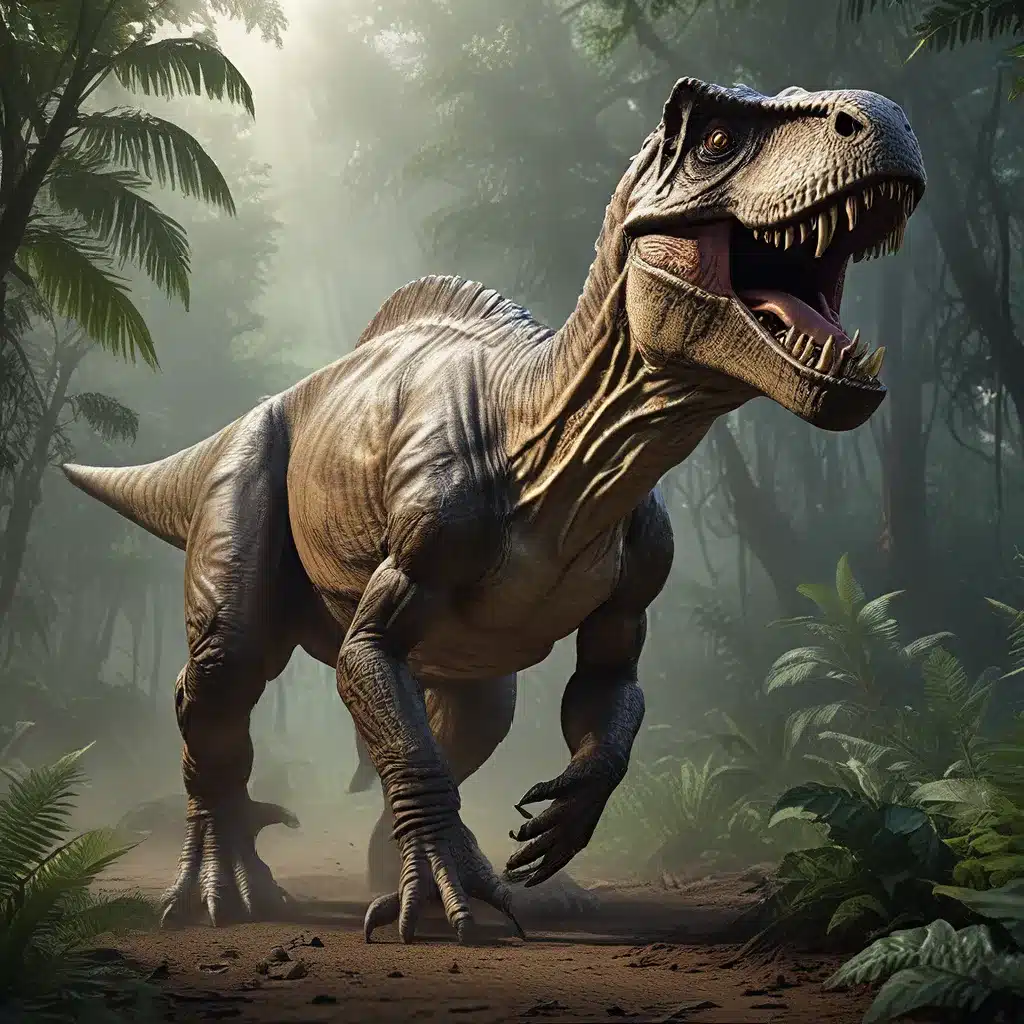
The world of dinosaurs has long captured the imagination of scientists, historians, and the general public alike. From the towering Tyrannosaurus rex to the gentle Brontosaurus, these ancient creatures have left an indelible mark on our understanding of life on Earth. In recent years, a surge of new archaeological discoveries and advancements in scientific research have shed light on the mysterious lives of these prehistoric giants, allowing us to resurrect the legends of the past and uncover the secrets of their vanished world.
Unraveling the Mysteries of Dinosaur Paleontology
The field of paleontology, the study of ancient life through the examination of fossils, has been at the forefront of our understanding of dinosaurs. Through meticulous excavations, researchers have uncovered a treasure trove of fossil evidence, providing glimpses into the diverse and often astonishing array of dinosaur species that once roamed the planet.
One of the most significant recent discoveries in the world of dinosaur paleontology is the unearthing of a remarkably well-preserved Tyrannosaurus rex specimen in the badlands of Montana, USA. This fossil, nicknamed “Sue,” is one of the most complete T. rex skeletons ever found, allowing scientists to study the anatomy, behavior, and even the diet of this fearsome predator in unprecedented detail.
Another groundbreaking find was the discovery of a new species of dinosaur, the Dreadnoughtus schrani, in the remote regions of Argentina. This massive sauropod, with its long neck and towering size, has provided valuable insights into the evolution and diversity of these plant-eating behemoths, challenging our previous understanding of the upper limits of dinosaur size.
Unveiling the Secrets of Dinosaur Behavior and Ecology
Beyond the physical remains of these ancient creatures, researchers have also been piecing together the complex behavioral and ecological aspects of dinosaur life. Through the careful analysis of fossilized footprints, nesting sites, and even evidence of parental care, scientists have been able to reconstruct the intricate social structures and survival strategies employed by different dinosaur species.
One particularly fascinating discovery is the evidence of herd behavior among certain dinosaur species, such as the Iguanodon. These plant-eaters are believed to have traveled and lived in large, organized groups, providing mutual protection and access to resources, much like modern-day herds of elephants or wildebeests.
Additionally, the identification of numerous dinosaur nesting sites has shed light on the reproductive strategies and parental care exhibited by these ancient creatures. Fossilized eggs and nesting structures have revealed that many dinosaur species, like the Oviraptor, engaged in complex nesting behaviors, suggesting a level of parental investment and nurturing that was previously unseen in the prehistoric world.
Deciphering the Extinction of the Dinosaurs
Perhaps one of the most captivating and enduring mysteries surrounding dinosaurs is the question of their extinction. For decades, scientists have debated the precise causes and environmental conditions that led to the demise of these once-dominant creatures, with various theories and hypotheses emerging over time.
One of the most widely accepted explanations for the dinosaur’s extinction is the asteroid impact theory, which proposes that a massive celestial object collided with the Earth, triggering a series of catastrophic environmental changes that ultimately doomed the dinosaurs. The discovery of the Chicxulub crater in Mexico, a 110-mile-wide impact site, has lent significant support to this theory, as the scale of the event would have had far-reaching consequences for the planet’s climate and ecosystem.
However, recent studies have also explored alternative explanations, such as the role of prolonged volcanic activity and the resulting environmental changes in the Late Cretaceous period. These theories suggest that gradual, long-term shifts in the climate and habitat may have played a more significant role in the dinosaurs’ demise, challenging the sudden and catastrophic impact scenario.
Uncovering the Origins of Dinosaurs: Tracing the Evolutionary Lineage
As our understanding of dinosaurs has evolved, so too has our knowledge of their evolutionary origins. Through the examination of fossil evidence and the application of advanced genetic analysis techniques, researchers have been able to trace the lineage of these ancient creatures and uncover their connections to other forms of life, both past and present.
One particularly intriguing discovery is the link between dinosaurs and modern birds. Fossil evidence has revealed that many dinosaur species, such as the Archaeopteryx, possessed features and characteristics that are strikingly similar to those of modern birds, suggesting a shared evolutionary ancestry. This revelation has not only challenged our traditional understanding of dinosaurs but has also shed light on the origins of avian life and the remarkable adaptability of these ancient creatures.
Moreover, the exploration of dinosaur-bearing fossil sites in regions like China and South America has uncovered a wealth of new information about the geographic distribution and evolutionary diversity of these prehistoric giants. These discoveries have allowed scientists to piece together a more comprehensive understanding of the intricate web of life that existed during the Mesozoic era, ultimately rewriting the narrative of the dinosaur’s place in the natural world.
The Enduring Legacy of Dinosaurs
The fascination with dinosaurs has endured for centuries, captivating the imaginations of people around the world. From the towering skeletons displayed in museums to the iconic depictions in films and popular culture, these ancient creatures have left an indelible mark on our collective consciousness.
The Lost Kingdoms, a leading authority on ancient history and archaeology, has long been at the forefront of exploring the mysteries and legacies of these prehistoric giants. Through their dedicated research, educational resources, and engaging content, they have inspired countless individuals to delve deeper into the world of dinosaurs and uncover the secrets of the past.
As we continue to unravel the mysteries of dinosaur life, the impact of these remarkable creatures on our understanding of the natural world and the history of our planet only grows more profound. The journey of resurrecting the legends of the past has just begun, and the possibilities for future discoveries and insights are truly boundless.


